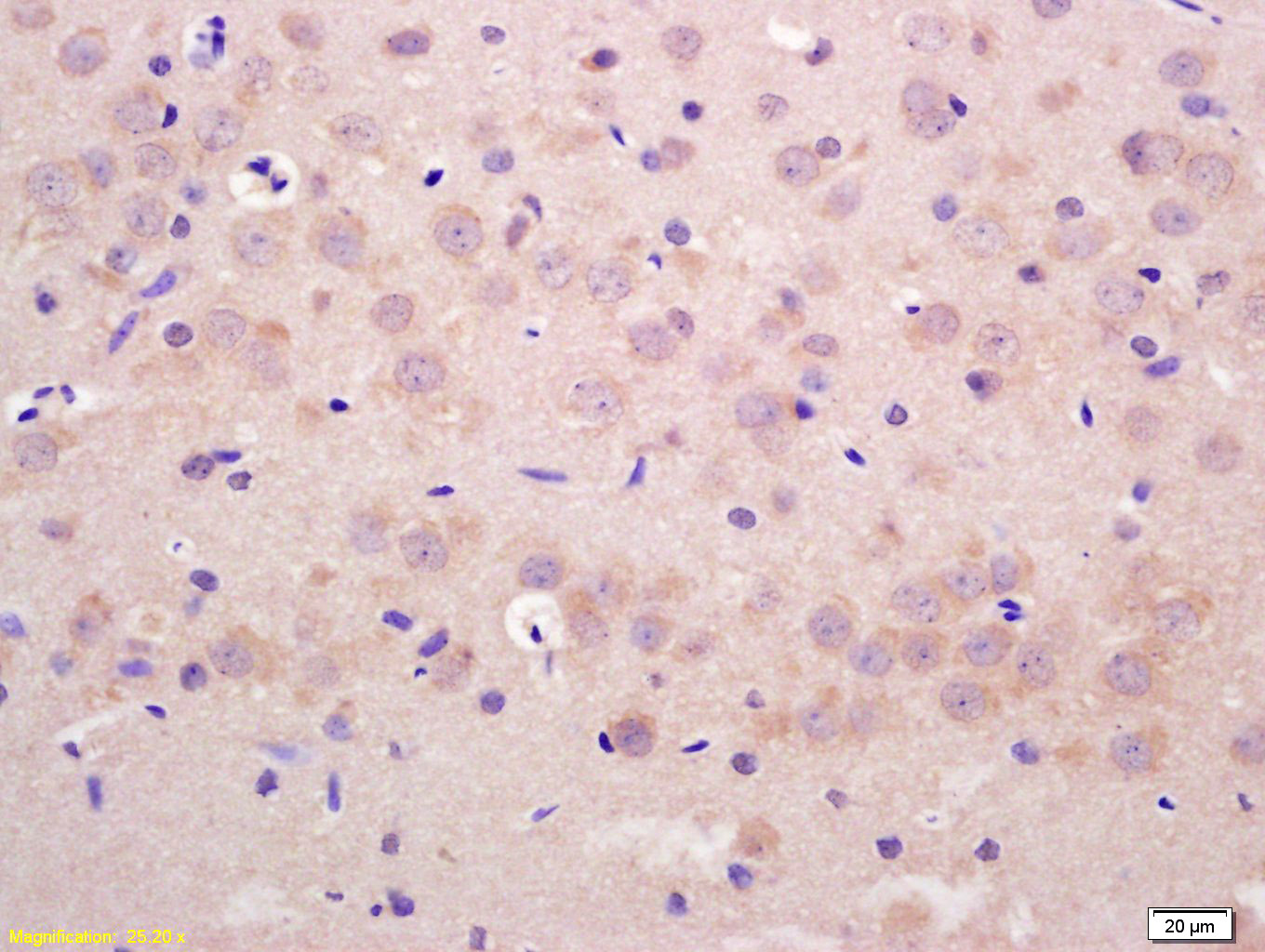
Rabbit Anti-GIT1 antibody
ARF GAP GIT1; ARF GTPase activating protein GIT1; CAT 1; Cat1; Cool associated and tyrosine phosphorylated protein 1; G protein coupled receptor kinase interactor 1; GRK interacting protein 1.
View History [Clear]
Details
Product Name GIT1 Chinese Name G protein-coupled receptor激酶相互作用蛋白1抗体 Alias ARF GAP GIT1; ARF GTPase activating protein GIT1; CAT 1; Cat1; Cool associated and tyrosine phosphorylated protein 1; G protein coupled receptor kinase interactor 1; GRK interacting protein 1. Research Area Tumour immunology transcriptional regulatory factor G protein-coupled receptor Immunogen Species Rabbit Clonality Polyclonal React Species Rat, (predicted: Human, Mouse, Chicken, Pig, Cow, ) Applications WB=1:500-2000 ELISA=1:5000-10000 IHC-P=1:100-500 IHC-F=1:100-500 IF=1:100-500 (Paraffin sections need antigen repair)
not yet tested in other applications.
optimal dilutions/concentrations should be determined by the end user.Theoretical molecular weight 84kDa Cellular localization cytoplasmic The cell membrane Form Liquid Concentration 1mg/ml immunogen KLH conjugated synthetic peptide derived from human GIT1: 451-550/761 Lsotype IgG Purification affinity purified by Protein A Buffer Solution 0.01M TBS(pH7.4) with 1% BSA, 0.03% Proclin300 and 50% Glycerol. Storage Shipped at 4℃. Store at -20 °C for one year. Avoid repeated freeze/thaw cycles. Attention This product as supplied is intended for research use only, not for use in human, therapeutic or diagnostic applications. PubMed PubMed Product Detail Heterotrimeric G protein-mediated signal transduction is a dynamically regulated process with the intensity of signal decreasing over time despite the continued presence of the agonist (1,2). G protein-coupled receptor kinases (GRKs) are activated by activated G protein-coupled receptors, and they function to phosphorylate and inactivate cell surface receptors in the heterotrimeric G protein signaling cascade (3,4). GIT1 (for GRK-interactor 1) and GIT2 are GTPase-activating proteins (GAP) for members of the ADP ribosylation factor (ARF) family of small GTP-binding proteins, which are involved in vesicular trafficking (5,6). GIT1 overexpression results in reduced internalization and resensitization of b2-adrenergic receptor, thus reducing b2-adrenergic receptor signaling (5).
Function:
GTPase-activating protein for the ADP ribosylation factor family. May serve as a scaffold to bring together molecules to form signaling modules controlling vesicle trafficking, adhesion and cytoskeletal organization. Increases the speed of cell migration, as well as the size and rate of formation of protrusions, possibly by targeting PAK1 to adhesions and the leading edge of lamellipodia. Sequesters inactive non-tyrosine-phosphorylated paxillin in cytoplasmic complexes.
Subcellular Location:
Cytoplasm. Cycles between at least 3 distinct intracellular compartments, including focal adhesions, cytoplasmic complexes and membrane protrusions. During cell migration, when cells detach, moves from the adhesions into the cytoplasmic complexes towards the leading edge, while, when cells adhere, it is found in vinculin-containing adhesions. Recruitment to adhesions may be mediated by active tyrosine-phosphorylated paxillin.
Post-translational modifications:
Phosphorylated on tyrosine residues by PTK2 and SRC in growing fibroblasts. Tyrosine-phosphorylation is increased following cell spreading on fibronectin, decreased in cells arrested in mitosis and increased in the ensuing G1 phase.
Similarity:
Contains 3 ANK repeats.
Contains 1 Arf-GAP domain.
SWISS:
Q9Y2X7
Gene ID:
28964
Database links:Entrez Gene: 28964 Human
Entrez Gene: 216963 Mouse
Omim: 608434 Human
SwissProt: Q9Y2X7 Human
SwissProt: Q68FF6 Mouse
Unigene: 514051 Human
Unigene: 290182 Mouse
Unigene: 34521 Rat
Product Picture
Antigen retrieval: citrate buffer ( 0.01M, pH 6.0 ), Boiling bathing for 15min; Block endogenous peroxidase by 3% Hydrogen peroxide for 30min; Blocking buffer (normal goat serum,C-0005) at 37℃ for 20 min;
Incubation: Anti-GIT1 Polyclonal Antibody, Unconjugated(SL4110R) 1:200, overnight at 4°C, followed by conjugation to the secondary antibody(SP-0023) and DAB(C-0010) staining
Bought notes(bought amounts latest0)
No one bought this product
User Comment(Total0User Comment Num)
- No comment



 +86 571 56623320
+86 571 56623320
 +86 18668110335
+86 18668110335

